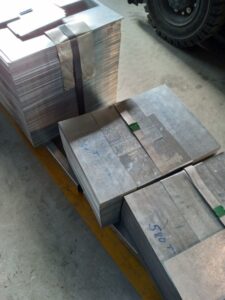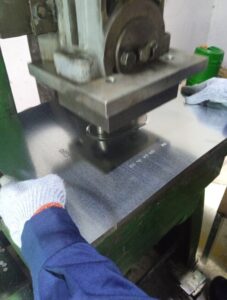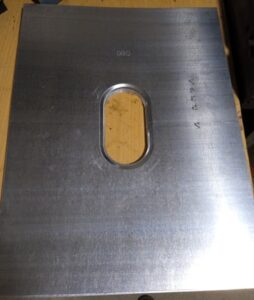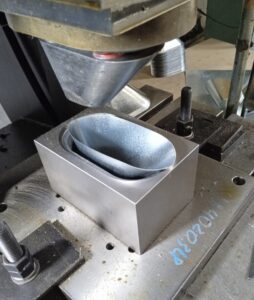I. Overview
This Roof Jack manufacturing case study shows how Vietnam Outsourcing (VNO) partnered with an American construction equipment company to localize Roof Jack production in Vietnam.
The customer previously sourced components from China but wanted to expand into Vietnam for more competitive pricing and better supply flexibility.
The Roof Jack has a funnel-shaped design, which does not require extremely tight dimensional tolerances. However, the correct forming technology is essential to ensure stable productivity, consistent quality, and strong resistance to corrosion and water leakage.
To achieve this, VNO worked directly with a Vietnamese metal-forming supplier, guiding them to adapt production processes to their existing press machinery. Together, both teams co-developed a forming method suited to available equipment and successfully delivered products that met U.S. quality standards—on time and within budget.

II. Process
III. Challenges & Solutions
1. Production Technology
This was the supplier’s first experience producing Roof Jacks, making it essential to adapt available tools and train the workforce.
The Roof Jack structure is relatively complex, with thin-sheet components that require careful handling.
Although size tolerances are moderate, the product must maintain a smooth surface, be water-tight, and resist corrosion.
Standard Roof Jack production often involves laser cutting and edge rolling using specialized machines. However, this supplier relied solely on conventional press machines and lacked advanced forming technology.
2. Overcoming the Current Situation
To overcome these limitations, VNO evaluated the supplier’s machinery and manpower, discovering that they only had press equipment and limited forming tools. Additionally, the production team lacked experience in meeting international appearance and quality standards.
To address this, VNO’s engineering team worked side by side with the supplier’s technicians, optimizing the Roof Jack manufacturing process using existing equipment. Over three months, both teams developed and refined tooling adjustments, ensuring the finished product met the U.S. customer’s specifications.
During this phase, VNO also connected engineering support from Vietnam and China, helping accelerate technical validation and quality approval. After several revisions, the first samples passed internal inspection and were approved for shipment.
IV.Summary
After months of collaboration and technical refinement, the supplier achieved stable and repeatable Roof Jack production with improved consistency and yield.
Before and after comparision
1st Production (before)
2nd Production (after)

Through continuous coordination, VNO and the supplier identified suitable manufacturing methods and material handling techniques that matched existing press-machine capacity. Consequently, they produced Roof Jacks that fully met U.S. customer requirements while maintaining cost competitiveness.
As a result, this successful Roof Jack manufacturing project opened the opportunity for the supplier to expand into other safety equipment production lines, such as roofing accessories, brackets, and protective fixtures for the construction industry.














